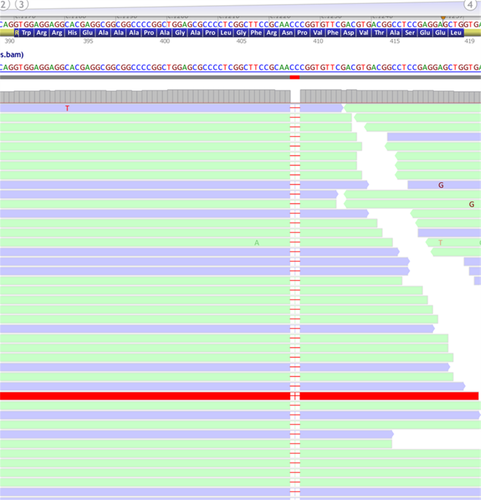
Contributions
Abstract: EP707
Type: E-Poster Presentation
Session title: Enzymopathies, membranopathies and other anemias
Background
Imerslund‐Gräsbeck syndrome (IGS) is a rare autosomal‐recessive disorder characterized by selective vitamin B12 malabsorption, megaloblastic anemia, and proteinuria. The precise incidence of this disorder is unknown in the Middle East and Arab countries. The disease is caused by a homozygous variant in either AMN or CUBN genes. In addition, some compound heterozygous variants are reported.
Aims
To report the clinical, laboratory and molecular data of patients diagnosed with IGS in Oman.
Methods
All data were retrospectively collected. Mutation analysis for all genes involved in vitamin B12/folic acid metabolism and megaloblastic anemia was conducted using next‐generation sequencing (NGS).
Results
Three siblings (2 girls and a boy) have been diagnosed with the condition. They exhibit a phenotypic variability with different age of presentation and different spectrum of disease. All patients harbor a novel biallelic frameshift mutation in exon 11 of AMN gene (p.Pro409Glyfs*), which was not reported previously in the literature (Figure). Both parents are heterozygotes for the same variant. All patients responded well to vitamin B12 parenteral therapy, but proteinuria persisted.

Conclusion
In communities with high incidence of consanguinity, cases of early‐onset vitamin B12 deficiency should be thoroughly investigated to explore the possibility of Imerslund‐Gräsbeck syndrome and other vitamin B12–related hereditary disorders. Further local and regional studies are highly recommended.
Keyword(s):
Abstract: EP707
Type: E-Poster Presentation
Session title: Enzymopathies, membranopathies and other anemias
Background
Imerslund‐Gräsbeck syndrome (IGS) is a rare autosomal‐recessive disorder characterized by selective vitamin B12 malabsorption, megaloblastic anemia, and proteinuria. The precise incidence of this disorder is unknown in the Middle East and Arab countries. The disease is caused by a homozygous variant in either AMN or CUBN genes. In addition, some compound heterozygous variants are reported.
Aims
To report the clinical, laboratory and molecular data of patients diagnosed with IGS in Oman.
Methods
All data were retrospectively collected. Mutation analysis for all genes involved in vitamin B12/folic acid metabolism and megaloblastic anemia was conducted using next‐generation sequencing (NGS).
Results
Three siblings (2 girls and a boy) have been diagnosed with the condition. They exhibit a phenotypic variability with different age of presentation and different spectrum of disease. All patients harbor a novel biallelic frameshift mutation in exon 11 of AMN gene (p.Pro409Glyfs*), which was not reported previously in the literature (Figure). Both parents are heterozygotes for the same variant. All patients responded well to vitamin B12 parenteral therapy, but proteinuria persisted.

Conclusion
In communities with high incidence of consanguinity, cases of early‐onset vitamin B12 deficiency should be thoroughly investigated to explore the possibility of Imerslund‐Gräsbeck syndrome and other vitamin B12–related hereditary disorders. Further local and regional studies are highly recommended.
Keyword(s):


